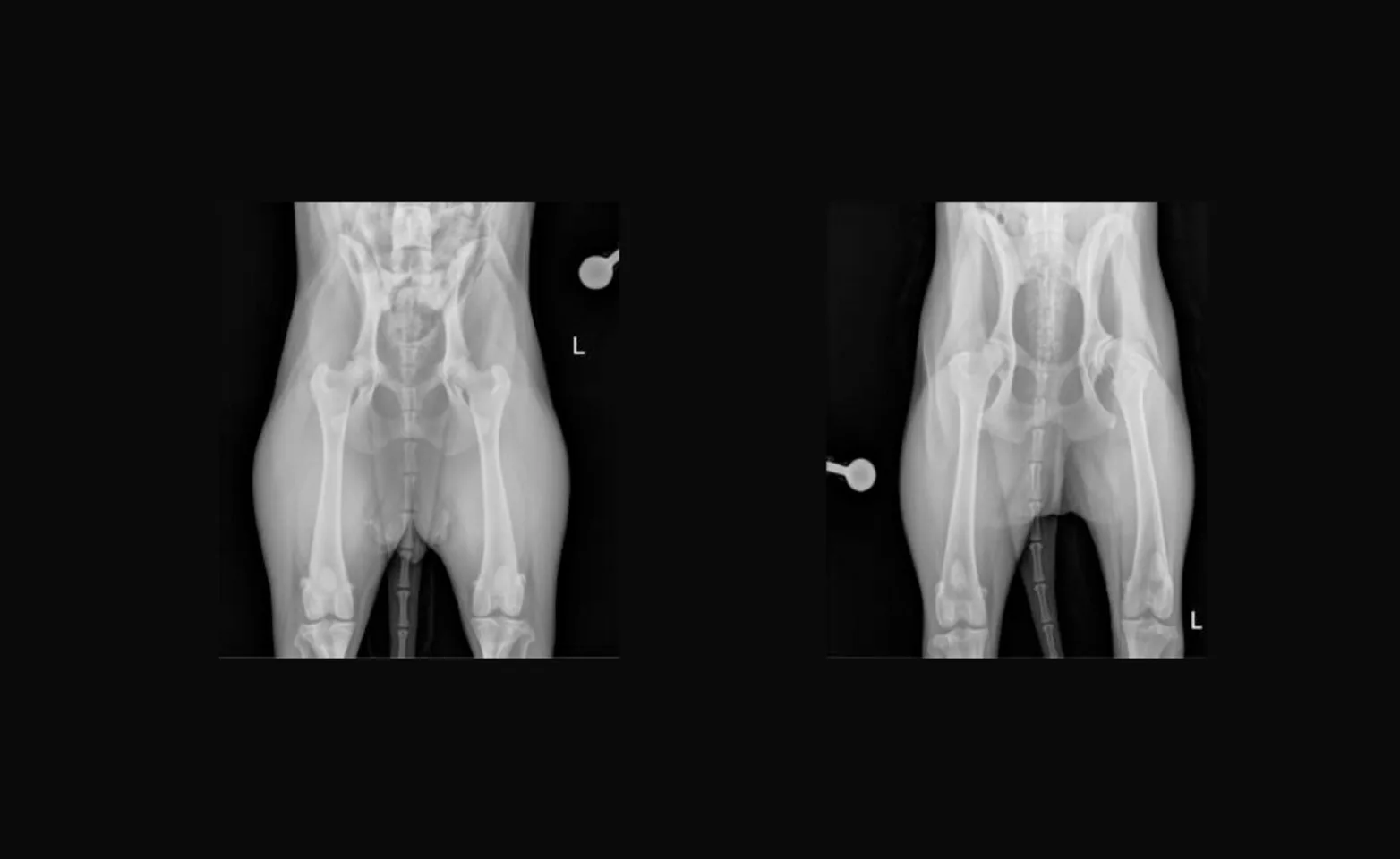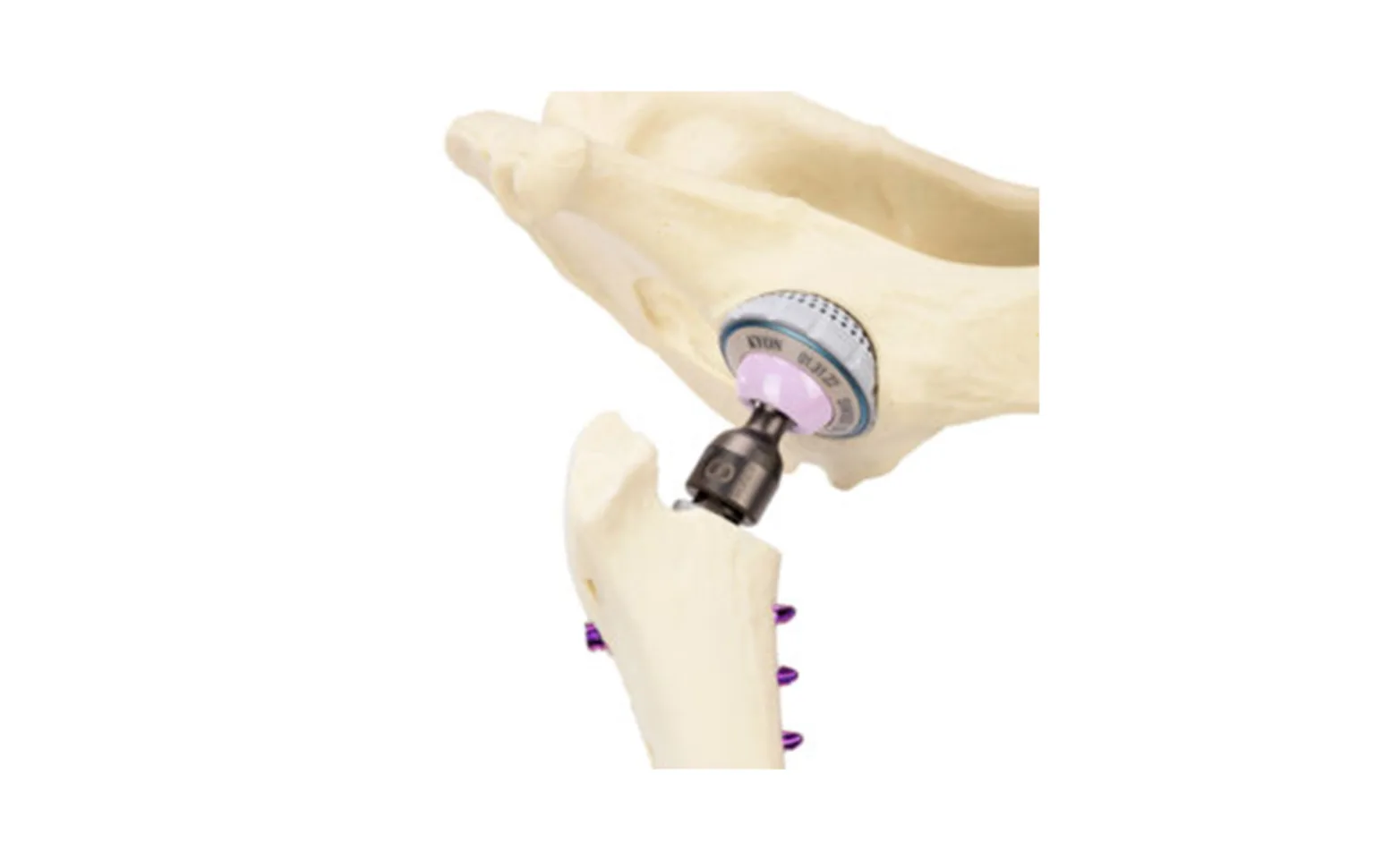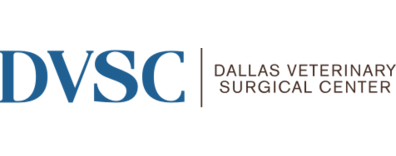Dallas Veterinary Surgical Center
Overview:
A total hip replacement (THR) procedure replaces both the head of the femur and the acetabulum of the hip joint (a complete arthroplasty). At DVSC we use state-of-the-art surgical implants, Kyon total hip arthroplasty. These new prosthetic components are designed to function in the same manner as a healthy pain-free joint, all while minimizing post-operative complications. THR is performed by surgeons who are board certified through the American College of Veterinary Surgeons and who have received specialized extensive training and certification in performing total hip arthroplasty giving your pet the best chance for an excellent outcome.

When is a THR recommended?
The most common reason a THR is recommended is to treat pain and disability associated with hip dysplasia and associated arthritis (Figures 1 [Normal Canine Hips] & 2 [Bilateral Hip Dysplasia and Subsequent Arthritis; left worse than right]). Other reasons for total hip arthroplasty include traumatic hip luxations that cannot be maintained in place following manual reduction and also some fractures of the femoral head and neck. Ideal candidates are at least 10 months or older and weigh greater than 40 lbs (breed dependent).
Hip dysplasia; what is it?
Hip dysplasia is a developmental disorder that occurs in dogs who are predisposed to the condition which is often characterized by laxity of the ball and socket joint. This creates malformation and abnormal pressures on the cartilaginous surfaces of the joint which leads to erosion, boney deposits, and ultimately pain of the joint and hind limb lameness. This pain can manifest as the classic “bunny hopping” gait, reluctance to jump or climb stairs, and overall decreased activity levels. Both hips are usually affected although one is often worse or more painful than the other. However, only approximately 20% of dogs with bilateral hip disease will require bilateral total hip arthroplasty in their lifetime.
What does the typical schedule consist of for total hip arthroplasty?
Consult: The THR surgeon will perform a physical exam on your pet and discuss THR with you in greater detail.
If THR is recommended during the initial consult, the next appointment will be two weeks prior to the THR date. At this appointment, your pet will be sedated for surgical radiographs, urine collection, and preparation of the limb for surgery.
Surgery: You should expect your dog to stay in the hospital for 24-48 hours prior to being discharged to your care.
What does the recovery period look like postoperatively?
For the first eight weeks following surgery, your pet is not permitted to run, jump, use stairs, or play with other animal or human friends. Outdoor activity is off limits besides short leash walks to urinate or defecate. Your dog should be monitored closely and should be strictly confined to a small indoor area with non-slippery floors or in a cage or crate. This is crucial for a successful outcome and recovery and is the best way to limit post-operative complications. At the end of the eight weeks, radiographs will be performed and evaluated by your pet's surgeon for approval to slowly start normal activity again.
What main risks and complications are associated with the THR procedure?
Total hip replacement is among the most advanced surgeries in veterinary medicine. Our surgeons are well trained but as with any surgery, complications can occur. Surgery in itself, no matter the procedure, carries some risk of unsuccessful outcomes and complications. While complications are the exception, a total hip procedure is not risk-free. Unforeseen and known complications may include dislocation of the ball and socket, fracture of the femur or pelvis, and surgical site infections. As with most musculoskeletal surgeries, neurological damage, anesthetic complications, and very rare death may also occur.
What are the post-operative expectations following THR?
The goal is to provide a pain-free hip joint, restore normal joint function, and provide excellent quality of life in the majority of dogs. The success rate of THR is approximately 90%. Generally, peak recovery time is 4-6 months following the surgical procedure.

Post-Op Kyon Total Hip Replacement
Kyon THR implant (https://www.kyon.ch/products-solutions/thr-total-hip-replacement/)
Author: Dr. Michael Orencole, DVM, DACVS-SA
